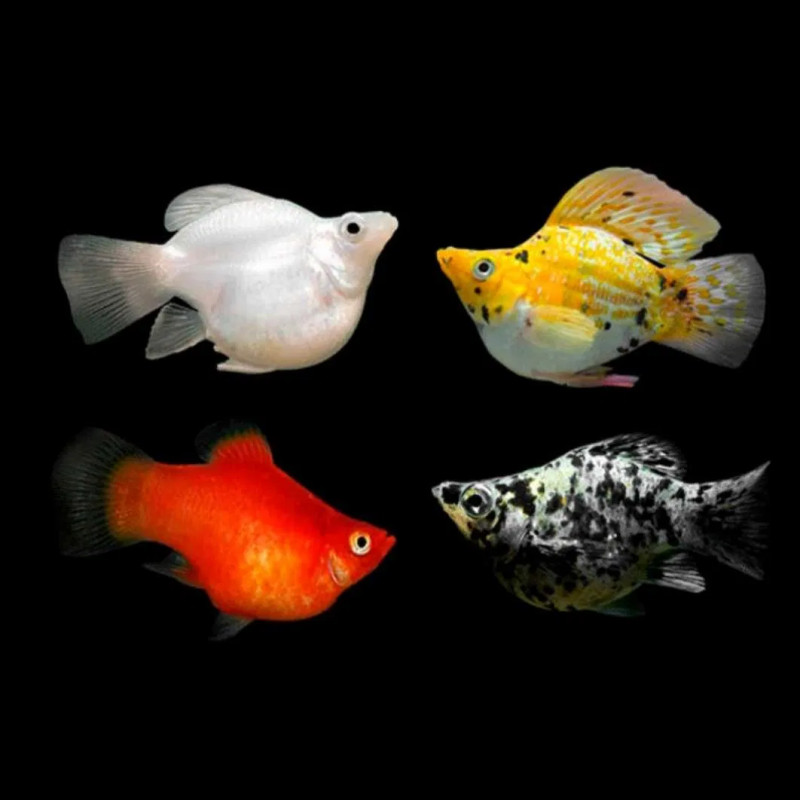More info
Molly Balloon - Poecilia latipinna
Molly Balloon (Poecilia latipinna)
The Molly Balloon, scientifically known as Poecilia latipinna, is a popular and attractive freshwater fish belonging to the poeciliid family. With its distinctive shape and a varied range of colors, it is a common choice for aquarists, from beginners to experts.
Appearance
These mollies are characterized by their long and showy dorsal and anal fins, giving them their common name "Balloon" due to the balloon-like appearance of their fins. They come in a wide variety of colors, from black to white, through orange, yellow, and more. Mollies are known for their adaptability to different conditions and for being resilient fish.
Habitat and Distribution
Native to Central America and North America, mollies prefer brackish waters and can be found in various areas such as estuaries, mangroves, and freshwater streams. They are versatile fish that can adapt to a variety of aquatic environments, making them suitable for community aquariums.
Maximum Size
Balloon mollies reach a maximum size of around 5 to 10 centimeters, depending on the variety and aquarium conditions.
Water Conditions
- Temperature: 24–28°C - pH: 7.0–8.5 - Hardness: 10–25 dGH
Diet
The diet of Balloon mollies should include a balanced mix of foods. They accept both dry foods such as flakes and pellets, as well as frozen or live foods like daphnia and mosquito larvae. They also appreciate the intake of algae and vegetation, which can aid in their digestion.
Behavior and Compatibility
Balloon mollies are peaceful fish that generally get along well with other non-aggressive species. It is recommended to keep them in groups of at least three to encourage natural social behaviors. However, keep in mind that mollies can reproduce easily, so plan accordingly if you have males and females together in the aquarium.
Reproduction
The reproduction of Balloon mollies is viviparous, meaning they give birth to live fry rather than laying eggs. Fry are capable of caring for themselves shortly after birth, but providing hiding places in the aquarium will help increase the survival rates of the fry.





